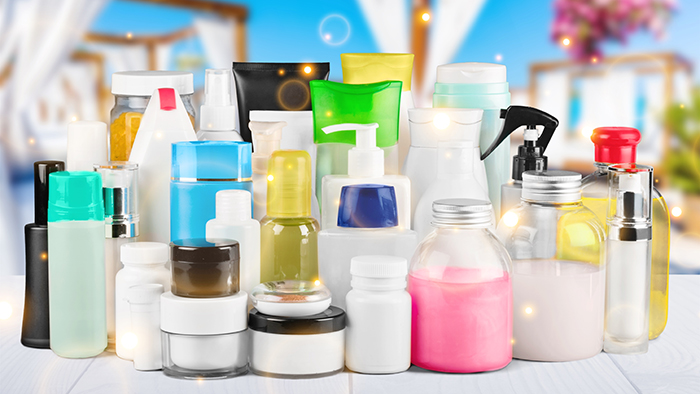
Business
How to Build Your 2026 Med Spa Marketing Plan
By Medical Marketing WhizAs the year comes to a close, now is the perfect time to reflect on what’s working—and ...
Posted By Mike Meyer, Wednesday, December 4, 2019

By Terri Ross, Terri Ross Consulting
Incorporating retail products into your medical aesthetic practice can substantially strengthen your sales program, increase patient satisfaction, boost profitability and increase patient retention—all things that are vital to positive patient outcomes and a healthy practice.
The key to a successful retail program is focusing on products that compliment your treatments and services. Don't try to be a one-stop-shop—carefully define which products will augment laser skin resurfacing, body contouring or skin tightening; research the options; have the reps come in and do an in-service; and ask to evaluate the products in addition to understanding the numbers and the support the company offers.
Once you'e selected your vendors and the lines you want to carry (my recommendation is to choose no more than 3-4 SKUs), spend the time and resources necessary to train your staff and integrate the products into your personalized treatment plans and services. ABE—always be educating; if you're not, or your team is not, stats show your patients will go to a department store or drugstore and buy products, and this obviously does not add value to your practice. After you'e launched your retail program, follow up on the numbers and make adjustments as necessary to fine-tune and maximize your profitability.
Defining your niche is the most important step in building a successful retail program. Just as you seek to define your niche in the world of medical aesthetics through specialized treatments and services, you should seek to define your niche in the products you offer. They should be carefully tailored to your treatment plans. Don't try to offer every product on the market—this will overwhelm your patients and will negatively impact your retail profitability. Why? Because patients will feel less like they are being offered a product to enhance their specialized treatment and more like they are being sold as many products as possible to increase their overall expenses. When you hone in on a specific retail line, you give patients the impression that you have carefully selected a product that will complement their services, leading to increased patient satisfaction and trust. Also, by focusing on a particular product line, you give your staff the opportunity to really learn the products, applications and relevant technology. Their ability to answer patient questions accurately and thoughtfully is critical and will further enhance the patient experience.
Conduct careful and thorough research of potential retail partners, their products and their current relationships with other offices. Once you'e honed in on a specific type of product, take note of how many retailers offer that product and what types of products are typically offered in parallel. When choosing a vendor, prioritize product quality and partnership satisfaction. Product quality is crucial—the products you offer patients at your practice will reflect on the overall quality of your services, and your goal is to offer the best patient experience possible. Partnership satisfaction is equally as important. How easy is the vendor to work with? How frequently are they willing to deliver and replenish inventory? What are the potential markups on each product? Is there an opportunity to grow with the vendor and expand as demand increases? What educational support do they offer? Are there minimum quantities? Do they buy back? These are key details to know in advance of making any binding commitments with potential vendors. Read more about how to choose the right vendor in this article from Business.org. The vendor you choose should have a strong record of sales, customer reviews and partner relationships.
Once you'e identified a few vendors, you'll want to dig deeper into the numbers. What types of products offer the highest profitability in the medical aesthetics market? What products offer patients the best outcomes, both in combination and stand-alone? What are the profit margins for some of the key products in each retail line you'e targeted? What is a typical quarterly return on investment (ROI)? While some of these numbers are relatively straightforward to calculate, others may be more difficult to pinpoint and will require careful research.
A key part of your investigation should be based on patient satisfaction. After all, even if profitability on a product historically is high, you must first sell the product to make a profit. Research how well customers respond to specific products offered by each vendor and calculate an estimate of overall satisfaction. It also may be beneficial to reach out to other medical aesthetics practices that offer specific products and request a rough estimate of patient satisfaction. What percentage of patients who buy this product review it positively? Would they recommend it to a friend or colleague? How many times have they purchased the product over the last year? How many products does a patient purchase, on average? Some of these numbers may be provided by the vendor themselves, particularly if they are a more established entity. Though careful research takes time, it will be worth your investment to evaluate potential vendors by the numbers before making a commitment.
Once you'e identified the vendors you want to work with, your next step is to establish and maintain a healthy relationship with this business partner. First, make sure any contractual agreements signed are mutually beneficial. In most cases, they will be, because you have parallel goals—to satisfy patients and sell products. Because product prices can fluctuate with the market, you may want to request written confirmation that the price will not fluctuate more than a maximum allowable percentage, based on your evaluation of profitability. Maintaining transparency is the most important part of managing your relationship with vendors. Pass along feedback on their products from your patients, whether it be positive or negative. They may be able to expand a specific line or improve upon existing products to better satisfy patients in your office. The goal is to grow together. If your sales program is performing exceedingly well, they will be able to learn from you. If your sales have become stagnant, they may be able to offer tips on how to boost your marketing program and may even provide literature or product demonstrations to increase your success with the product. Seek to establish and maintain a positive, honest and mutually beneficial relationship with your vendor.
Aside from product quality and vendor relations, how well you integrate product lines into your treatment plans and services is the most important part of a successful retail program. Create in-house literature to support the products you offer, such as pamphlets, posters and quarterly newsletters. Include the expert opinions of physicians, as well as positive feedback from patients who have already tried the products in your office. You want to give your patients the impression that these products will enhance their overall experience and the success of the treatments they receive. If a specific product has been shown to increase the effectiveness of a certain treatment or prolong the effects of a certain service, emphasize that in your marketing plan. In short, the product line you'e chosen to sell should not stand alone in the back corner of your waiting area. Spotlight the products by featuring them in personalized treatment plans and monthly specials. A successfully integrated retail program will enhance the overall patient experience, resulting in increased patient satisfaction and increased profitability.
The success of your retail program is directly proportional to how well your staff is trained. As I discuss in my LAER model of staff training, it is critical that every member of your staff listens to and engages your patient population. They should be intimately familiar with the personalized treatment plans and services you offer. When you launch a retail program, invest in staff training. A well-trained staff will have a thorough understanding of your products, how they will be incorporated into your treatment plans and how they compare to similar products on the market. The goal is to inform your staff so they can inform your patients. When a patient asks about a specific product, they should receive a well-informed, positive response. This will not only help to increase trust in your staff, but also boost sales and lead to increased profitability.
Staff training is critical to almost every aspect of your medical aesthetic office. You invest in a beautiful office, you invest in expense equipment, and you invest in marketing to get new patients, but often internal training is overlooked or neglected. Training your team to convert calls into appointments, convert web leads and conduct an effective patient consultation require skills, confidence, knowledge and effective communication. Investing in training will yield the greatest ROI and build confidence for empowering your staff to help you grow your business and provide five-star customer service. To learn more about the processes and techniques that go into an effective sales program, contact me today and ask about my workshop on staff training.
Once you'e built a retail program, you'll want to review the numbers at least once per quarter. Calculate your overall ROI on retail sales and determine which products have the highest sales and profitability rates. Also, take note of which products patients purchase more than once. The most expensive products do not always offer the highest profit margins. Use this data to tailor your marketing program and staff training, if needed.
If a particular product isn't selling well, execute a plan to incorporate it into a monthly special, or feature it in a specific service or treatment plan. Consider sending out a product survey in your quarterly newsletter to learn which products your current and prospective patients are most interested in; use this data to hone your inventory and boost sales. You also can report this data back to your vendors, so they can better plan and tailor their production and inventory delivery. If you want to sustain a successful retail program, you'll need to keep a regular eye on the numbers and make the necessary adjustments in your protocols, processes, marketing and staff training.
Building and maintaining a successful retail program can substantially increase patient satisfaction and boost profitability. Have you maximized profitability in your office? Contact me to find out how you can implement a successful sales program in your office today.
Terri Ross brings more than 20 years of sales and management experience to the field, having worked with leading-edge medical device companies such as Zeltiq, Medicis, EMD Serono, Merck Schering Plough and Indigo Medical, a surgical division of Johnson.
Ross' vast knowledge and experience as a sales director managing upwards of $20M in revenue and successful teams has allowed her to become a renowned plastic surgery management consultant helping aesthetic practices thrive.
To optimize revenues and business performance, Ross' practice management consulting services help physicians evaluate practice processes including, but not limited to, overall-operating efficiencies, staff skill assessment, customer service and operating efficiency strategies. The goal is to develop a comprehensive plan of action to improve productivity, quality, efficiency and return on investment.
Related Tags
Medical spa news, blogs and updates sent directly to your inbox.

Business
By Medical Marketing WhizAs the year comes to a close, now is the perfect time to reflect on what’s working—and ...

Business
By Eric Atienza, Assistant Director of Digital Marketing and Marketing TechnologyMore and more people are turning to med spas for ...

Business
By Obsidian Strategic ConsultingRunning a medical spa is about more than delivering great patient experiences. Behind every treatment is a ...

Clinical
By Belmar Pharma SolutionsRecently, Belmar Pharma Solutions partnered with NewBeauty, an authority on all things beauty, offering readers an in-depth ...